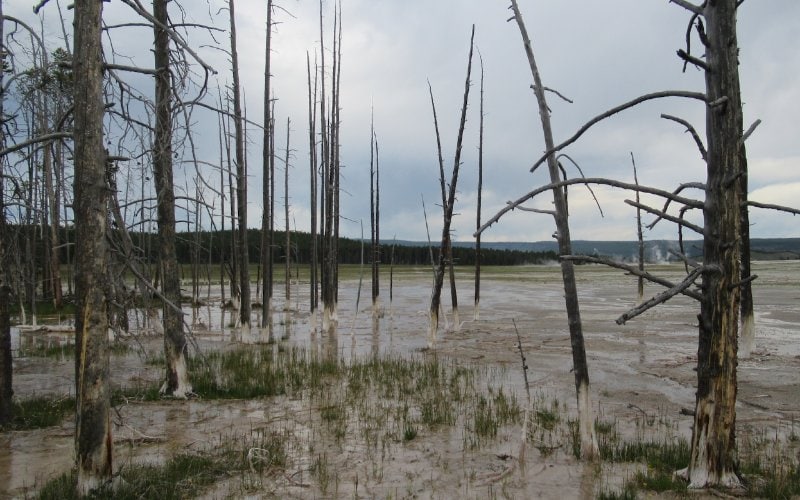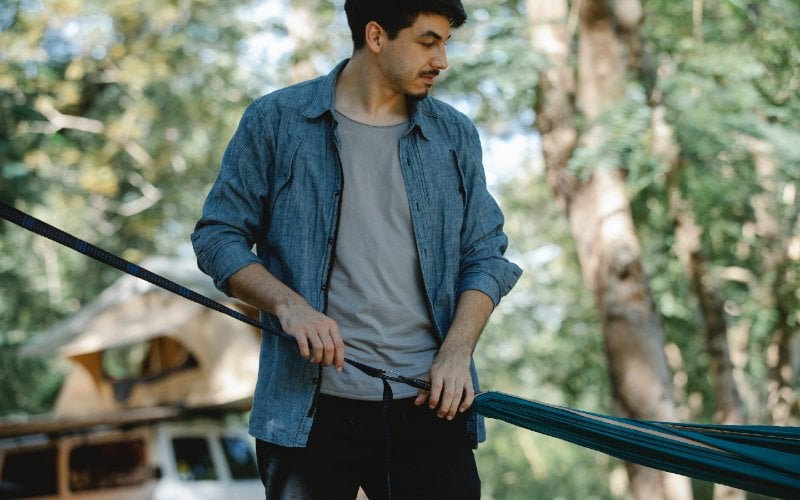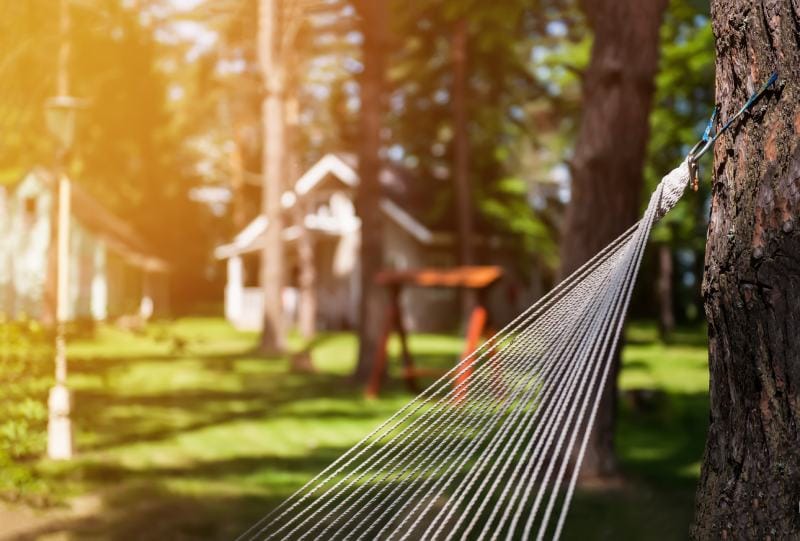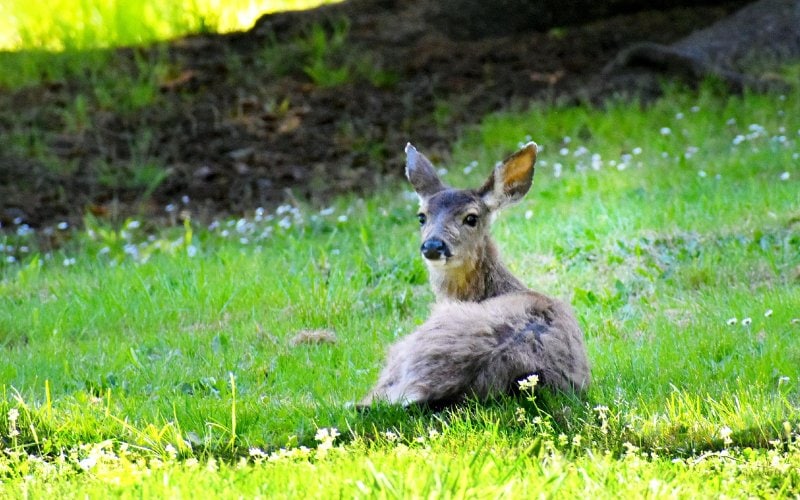6 Expert Tips on How to Hang a Hammock Easily
-
Codee Chessher
- Last updated:

Hammocks are portable, easy to set up and take down, and comfortable to use as a bed at home or when camping. As with any activity, hanging a hammock is easier when you learn a few tricks of the trade. In this article, we go over some of the most effective tips to make hanging a hammock a cinch.
The 6 Expert Tips for Hanging a Hammock
1. Use Tree-Saver Straps

Humans are heavier than you’d think, and hammocks put the burden of your weight entirely on the trees. Choose strong, live trees and use long, flat tree-saver traps to evenly distribute your weight across a larger surface area. They also won’t scrape or damage the trees’ bark.
Hammocks are already better for the Earth because they don’t disturb the soil with stakes like tents, but tree-saver straps help even more.
2. Don’t Use Dead Trees

Dead trees are a serious health hazard for hammock campers. First, the tree may not be able to support your weight and may collapse in some cases. Even if the trees do hold your weight, you risk dead branches or other debris falling on you while you sleep.
Don’t take the risk. Locate large and strong live trees that don’t have many tree branches around them for your safety and the hammock’s security.
3. Don’t Pull It Too Tight

The ideal angle for a hammock is with a deep sag, and the secret to comfortable sleeping is to put the foot end slightly higher than your head. About 30 degrees from a flat, horizontal surface is a good place to start. For the best results, angle yourself diagonally across the hammock. A deep sag is very important because it makes your center of gravity lower, stabilizing the hammock.
4. Consider Using a Sleeping Bag
Hammocks are often considered an all-in-one sleeping solution while camping, but a sleeping bag is a lightweight addition that you’ll want to try. Especially in chilly conditions, you’ll appreciate the ability to conserve your body heat while sleeping. Some hammocks have a kind of sleeping bag cover attached, so that may be something you’re interested in.
5. Utilize Drip Lines to Stay Dry

Hammock camping pros all recommend using a drip line. This is a loose piece of rope tied below your hammock suspension. Because water flows to the lowest possible point, hammocks without drip lines can get soaked even if you hang a tarp over them. With the drip line, the water will flow down to the end of the rope instead of onto you.
6. Respect the Local Wildlife

Avoid eating or storing food in your hammock to avoid attracting animals like raccoons, bears, and other problematic critters. Similarly, you should research your camping area beforehand to make sure that the trees nearby are suitable for hammock camping.
Many riverland camping zones will post notices if the trees are an endangered or protected species. Naturally, you want to avoid using them to hang your hammock.
Final Thoughts
Hammocks are a lightweight and comfortable way to ditch befuddling tent poles and stakes and get camping faster. They also don’t erode the soil like tent stakes. When used with tree-saving straps and other tips listed above, you can minimize your impact on the environment where you camp for little money and work.
Featured Image Credit: Kristaps Ungurs, Unsplash
Contents
